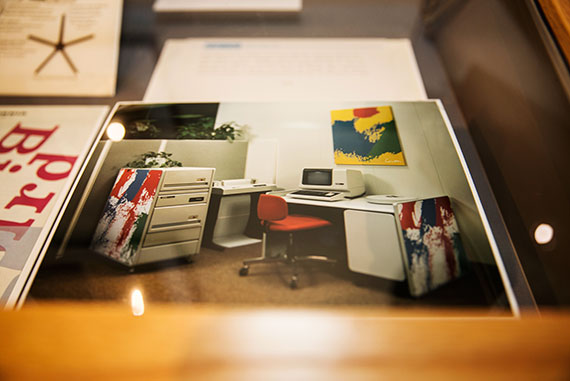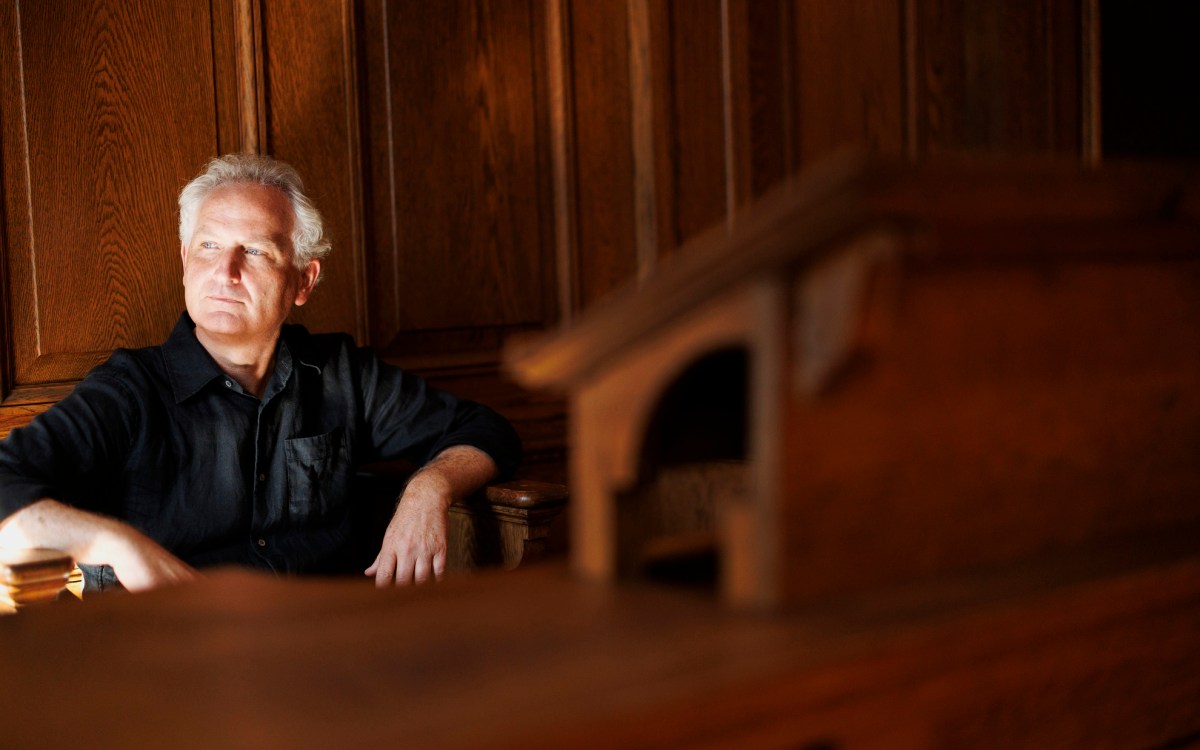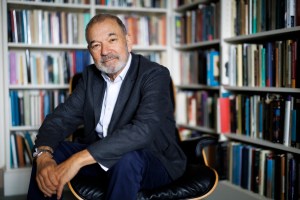Out of the blue, strokes of brilliance
Phone call leads to Kent acquisition for Schlesinger Library
Sometimes, a phone call can lead to something extraordinary.
Just ask the curators at Radcliffe’s Arthur and Elizabeth Schlesinger Library on the History of Women in America. Fresh from putting together an exhibit on the artist-nun-activist Corita Kent, their phone rang. It was Joe Nahil from Cape Cod with a simple question: Were they interested in a collection of Kent’s work?
They were, indeed.
“It’s wonderful when a call comes out of the blue for something that’s just perfect,” said the library’s curator of manuscripts, Kathryn Jacob, who coordinated the acquisition — six silkscreen prints by Kent, a pop artist fond of blending the sacred with the secular, and the subject of a new exhibit at the Harvard Art Museums. As the repository of Kent’s official papers, the library couldn’t pass up the opportunity to complement their holdings with some of the artist’s actual prints.
“We are delighted to have acquired this material,” said Jacob.
As it turns out, the Schlesinger now holds some of Kent’s scarcest-seen work.
The six prints make up one of only a handful of sets the artist created for a 1976 Digital Equipment Corp. commission. The company’s minicomputers — massive by today’s standards — were beginning to catch on among businesses around the country. To help them appear less imposing, Digital’s marketing and public relations team, which included Nahil, suggested decorating the machines with artwork.
Nahil had recently heard about Kent’s rainbow design for the Boston Gas Company’s large tank along Interstate 93, and recommended her for the project. With Digital’s OK, he and Kent worked out a deal that included two stipulations: The prints couldn’t incorporate any text and couldn’t be religious in any way. The rest was up to her. The resulting six panels are reminiscent of Kent’s design for the gas tank: bold strokes of blue, green, red, and yellow splashed across stretched canvas.

Though Nahil couldn’t remember the exact sum agreed upon, he knows it was substantial. “We paid her handsomely.”
Like so many who entered her orbit, Nahil liked Kent right away. “She was delightful. She was spry and witty … she knew what she wanted. I loved her. She was phenomenal. She was headstrong. She knew her own mind.”
Kent worked, he said, according to her own schedule and “on her own terms,” and once the work was done, so too were her obligations.
The artist had no intention of attending the splashy event Nahil had scheduled in New York to promote the works. He’d rented out the lobby of Lincoln Center and produced glossy press kits that included photos of the prints. The only thing missing was Kent.
“It was way too commercial for her,” said Nahil, who reminded Kent that the commission itself was a commercial endeavor. Kent, he said, responded by simply saying: “No, no, no, Joe. That’s different.”
More like this
Unfortunately, a small but significant glitch ended the project soon after it began. Despite their best efforts, the only way engineers could figure out to attach Kent’s work to the computers without harming her prints was by using small magnets. But magnets, of course, were “anathema to memory disks,” as Nahil put it.
“The whole thing disappeared,” he said. “She never produced any more than the initial sets she sent to us.”
Nahil is unsure what happened to most of the work. Two sets, he knows, were accidentally destroyed. He kept one and displayed it at home until a series of moves landed it in storage, where it remained for years. While preparing for another move, Nahil, at the urging of his granddaughter, an art student at Boston University, realized Kent’s artwork needed “a better home.”
A contact at the Corita Art Center in Los Angeles suggested Radcliffe, and Nahil made the drive to Cambridge with the prints, along with a small replica of the Boston Gas Company tank with Kent’s design, a few letters from Kent, and two catalogs of her work. While touring the Schlesinger exhibit, which includes material about Kent’s teaching, activism, and art, Nahil noticed one of his own memos about the Digital commission alongside one of his press photos.
“That kind of blew me away. It was just an amazing confluence of circumstances,” said Nahil, who was unaware of the Schlesinger exhibit when he first called the library. “And I think she’s landed in the place she was meant to be.”
The work is in good company among the numerous Kent holdings at Harvard, which include, as featured at the Schlesinger, a poster advertising a peace event with Kent, the Rev. Daniel Berrigan, singer Judy Collins, and the University’s own Harvey Cox, now the Hollis Research Professor of Divinity.
Cox met the artist in the late ’60s, when he gave a lecture at the Immaculate Heart of Mary, for whose Immaculate College Kent taught art. He sat in on one of her classes, having been told by a friend, “You really ought to meet Sister Corita.” The friend was right. The two immediately hit it off.
“She was a rather small person, but as soon as you were with her there was a kind of a largeness about her. She had a very winning way. A big smile and a warmth about her and a way of engaging people.”
The pair joined forces for a number of events and rallies in the Boston area after Kent left the order and relocated from Los Angeles to Boston’s Back Bay.
“We really liked each other, and I felt that working together in the peace movement had really bonded us together in a way.”
Cox is happy to see Kent recognized today as central to pop art, after years of being overshadowed by the men of the movement, including Roy Lichtenstein and Andy Warhol. He called her use of the pop medium to send a spiritual message “bold” and “inventive.”
“Some people thought it was kind of dangerous and risky and a little questionable, but she didn’t care about that. She wanted to do her art and she really wanted to get that message out.”
Cox, who shared Kent’s desire to help the Catholic Church open up to the world in the wake of Vatican II and “reach out with a positive Christian spiritual message to people on the edges” of religion, said he only wished the artist, who died from cancer in 1986, could witness the efforts of Pope Francis.
“I think she’d be elated at the kinds of things he’s up to.”
“Corita Kent: Footnotes and Headlines” runs through Dec. 4 on the first floor of the Schlesinger Library, 10 Garden St., Cambridge. Library hours are Monday through Friday, 9 a.m. to 5 p.m.





